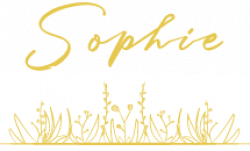Week 9 in IXD301 with Kyle we focussed this weeks class on Usability Testing and the importance behind this through our design process.
What is Usability Testing? –
Usability refers to how well something performs to the action it is required to do. Anything that a person is to interact with should be usable and meet the requirements that they expect. In terms of a digital product usability the average user should be able to use the software easily and simply enough to achieve specific goals such as logging in, navigation, understanding what they’re using the product for etc.
Usability Testing is a UX research methodology that focuses on the actions that are required prior to the completion of a product or service that refers to the evaluation of how well the product or service responds to the actions of a user(s). The main goal when aiming to create some Usability Testing is to be able to identify the problems that rise when new users discover the product or service, collect qualitative and quantitative data and demonstrate the users understanding and behaviour towards the service or product.
Being able to identify the issues with the usability with my digital product will allow me to set goals to improve and fix the problems that arise via the testing and in the long run improve the users experience. When Usability Testing occurs and issues arise, I will use my competitor analysis to discover the best way to overcome the issues I may face using other design interfaces for inspiration.
Usability Testing Methods –
Before focusing on Usability Testing its important that I have a full understanding of my target audience and users I aim to reach when creating my digital product and the resources my target audience and users have such as time and money. Being aware of this data will help me evaluate the correct method of testing for example I will be aiming to design for children so my testing will have to be child friendly to get the most accurate results.
At the beginning of my Usability Testing process I will need to decide what method I will be conducting in order to find the correct resting for my product:
- Research goals – What I want to achieve
- Resources – How much time and money can be invested
- Audience- Who I am to create product for
Guerilla Testing –
This is one of the simplest methods of Usability Testing that can take place in the early stages of project development process. This method might not be a useful tool for me to use for this project as this method requires going into the public and openly asking question about the prototype. The users are chosen randomly and it requires a quick test. However, I could possibly go into the school sector and see if this would work as a method of Guerilla Testing and take groups of children for testing if this was allowed.
This testing method will ensure that I collect personal opinions, behaviour and emotions towards my ideas and design.
Screenflow Testing –
Screenflow is an application that was realised by Telestream and allows access to a Mac OS X application and Apple Laptops with an internal camera and microphone. This application will record video from the internal camera, any USB cameras, the internal microphone, any USB audio devices and the audio from the computer generated sound (eg video on Youtube, Skype audio, etc).
Using Screenflow will give me access to the interactions both video and audio that my users are having with my product design when completing a set task.
Altogether then this class was useful and the notes that I have kept I will be able to refer back on in order to recall the methods and process of produces effective and information usability testing. I have covered the topic prior to this project but it is always helpful to have a recap on this subject to ensure I am doing this area pf the design process correctly.
